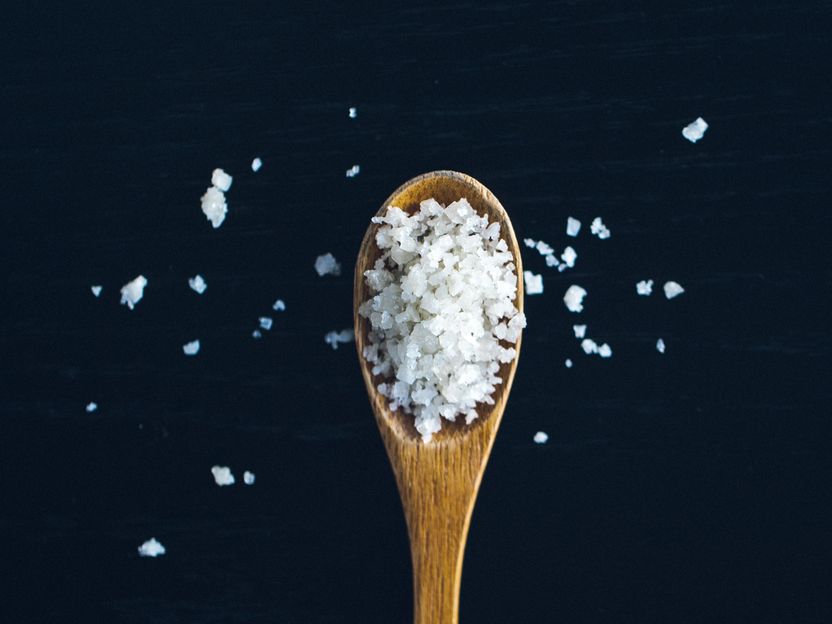Glutamates Such as MSG Can Help Reduce Americans' Sodium Intake
Advertisement
Promising results from a new study published in the journal Nutrients add to accumulating evidence that glutamates such as monosodium glutamate (MSG) can be used to reduce sodium in the food supply. The study analyzed data from the National Health and Nutrition Examination Survey (NHANES), looking at what Americans eat and estimating the reduction in sodium if glutamates are used as a partial replacement for sodium in certain food categories.

Photo by Jason Tuinstra on Unsplash
Findings indicate that the substitution of glutamates for salt can reduce sodium intake by up to 7-8 percent.
Research results are consistent with the National Academies of Sciences, Engineering, and Medicine's 2019 Dietary Reference Intakes for Sodium and Potassium report, which references MSG as a tool to help reduce sodium1. The 2015–2020 Dietary Guidelines for Americans recommend that Americans consume less than 2,300 milligrams (mg) of sodium per day as part of a healthy eating pattern2, but about 90% of Americans are consuming too much. High sodium intake can raise blood pressure, and high blood pressure is a major risk factor for cardiovascular diseases3.
"Most of our sodium intake comes from restaurant meals and packaged foods," says Dr. Taylor C. Wallace, an Adjunct Professor in the Department of Nutrition and Food Studies at George Mason University and lead researcher in the study. "MSG can be used to reduce sodium in these foods without a taste trade-off. MSG contains about 12 percent sodium, which is two-thirds less than that contained in table salt, and data shows a 25-40 percent reduction in sodium is possible in specific product categories when MSG is substituted for some salt. As Americans begin to understand that MSG is completely safe, I think we'll see a shift toward using the ingredient as a replacement for some salt to improve health outcomes."
Researchers used the data set from those enrolled in NHANES between 2013-2016, which includes 16,183 subjects aged 1 year and older. They established average sodium consumption and then used a modeling method to estimate sodium reduction using glutamate. For the total population, they found that the substitution of glutamate in certain food categories can reduce sodium intake by approximately 3 percent, and among consumers of at least one product category that is typically higher in sodium (like cured meats), the addition of glutamate could reduce sodium intake by even more (7-8 percent).
This indicates that if glutamate were used as a salt substitution in products like cured meats, meat-based frozen meals, soups and crackers, everyone in the US >1 year of age will likely benefit from a reduction in sodium. Other research has shown that when salt is simply reduced on its own, consumer acceptance of the food or product goes down. Because glutamate offers umami taste, it can reduce sodium without sacrificing taste.
The study was funded by Ajinomoto Co., Inc. It uses conservative assumptions on sodium reduction by substituting glutamates for sodium chloride, and does not model inclusion of glutamates in restaurant foods, which supply a large portion of sodium to the US diet. Therefore, the effect of glutamates could be greater than what is presented in the study.
1 National Academies of Sciences, Engineering, and Medicine. Dietary Reference Intakes for Sodium and Potassium: Knowledge Gaps and Future Directions. Washington, DC: The National Academies Press; 2019.https://www.nap.edu/read/25353/chapter/18#410
2 U.S. Department of Health and Human Services and U.S. Department of Agriculture. (2015). Dietary Guidelines for Americans. Retrieved from https://health.gov/dietaryguidelines/2015/guidelines/
3 Jackson SL, Coleman King SM, Zhao L, Cogswell ME. Prevalence of sodium intake in the United States. MMWR. 2016; 64:1394–1397.



























































